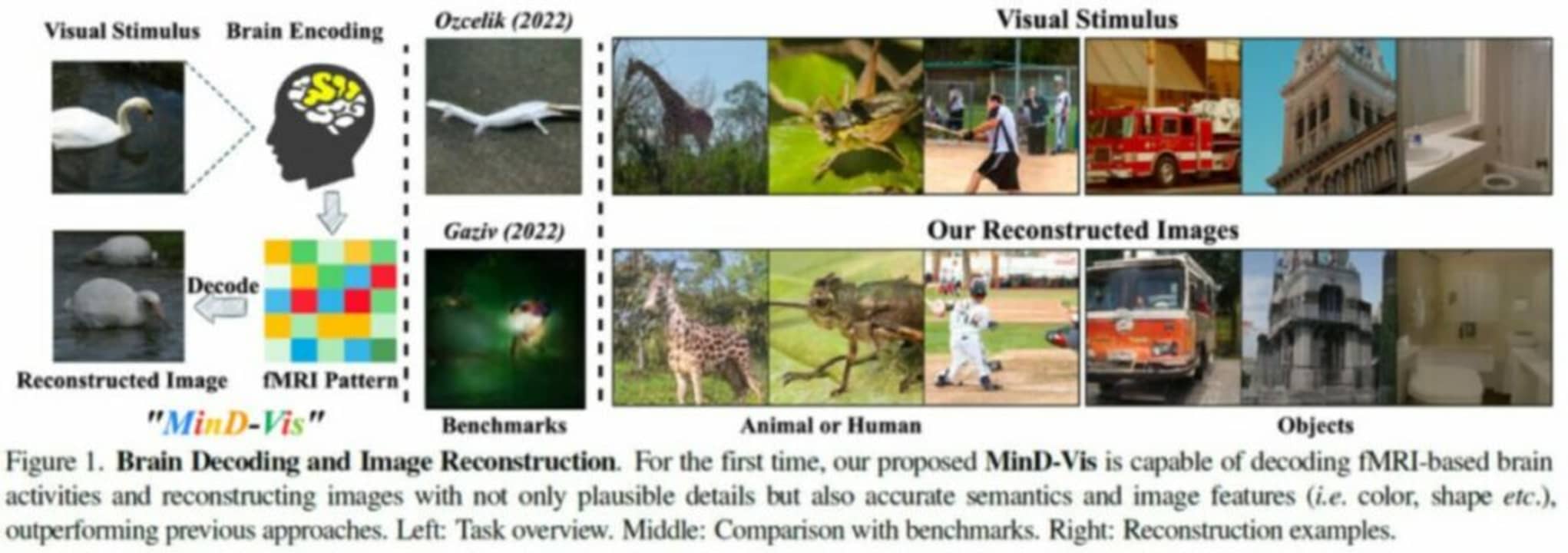Can you imagine being able to communicate with a machine solely using the power of your mind? Or having a device that can read your thoughts and translate them into images? Well, this is no longer science fiction but a reality, thanks to the advancements in artificial intelligence and neuroscience.
A group of researchers from the National University of Singapore, the Chinese University of Hong Kong, and Stanford University has developed an AI model that can read people’s thoughts and reproduce them in the form of images.
The model is based on functional magnetic resonance imaging (fMRI) technique, which measures brain activity through changes in blood flow.
Named MinD-Vis, this remarkable artificial intelligence is capable of analyzing brain signals collected through fMRI and then converting them into data that can be processed by an image-generating AI, in this case, Stable Diffusion.
“Just as ChatGPT understands human natural language, this AI can grasp brain activities and then translate them into a language understandable for Stable Diffusion,” explains Jiaxin Qing, one of the researchers on the project.

After processing the provided data, the artificial intelligence can create low-quality representations that depict the subject’s thoughts at that moment. Among the examples published in their study, you can observe recreations of various images, such as a firetruck, a swan, an iguana, or a building.
The results from MinD-Vis are astonishing: this new model outperformed the best previous rankings achieved by similar artificial intelligences, being 66% better in semantic mapping and 41% better in generation quality.
With this AI, the authors aim to “deepen our understanding of the human visual system and build a solid foundation to bridge human vision and computer vision through the brain-computer interface.” This technology could be very useful for gaining a better understanding of certain neurological disorders and cognitive deficiencies.
Some of the links added in the article are part of affiliate campaigns and may represent benefits for Softonic.


